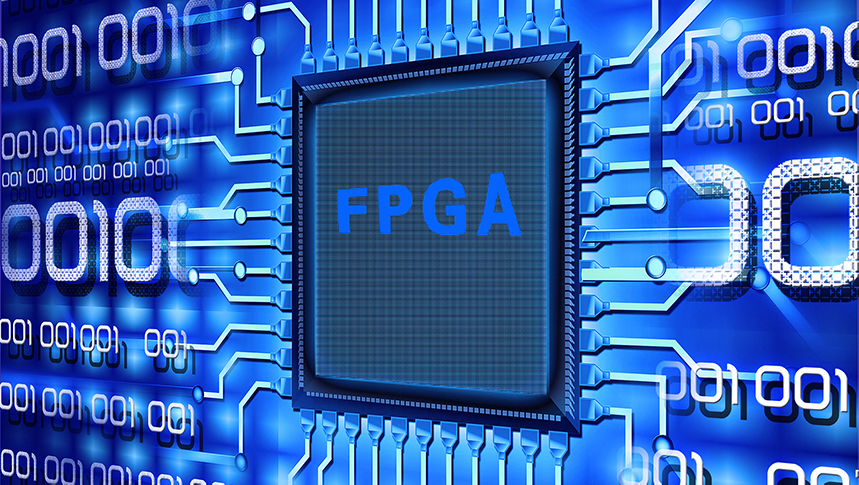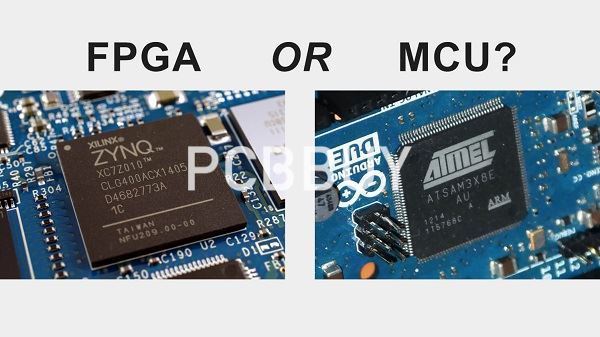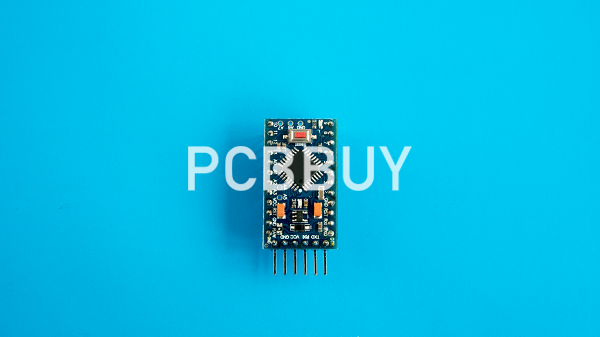What is the difference between FPGA and microcontroller?
By:PCBBUY 07/20/2021 17:27

PGA and microcontrollers are two of the most popular items of electrical engineers or hobbyists use. Both can be programmed to perform certain functions. Do you know about the differences between them? In this passage, we are going to talking about the topic and please check the content we prepare.

What is FPGA?
FPGA is short for Field-Programmable Gate Array and is a type of integrated circuit. An engineer or designer can program it after manufacturing to carry out various tasks. FPGAs come with many programmable logic blocks and frameworks of interconnects that can be reconfigured to be rewired. The logic gates can be inter-wired using different configurations, which allow them to be wired together. You can perform complex combinational functions by configuring the logic blocks and secure logic gates such as XOR and AND.
You will also find memory components in an FPGA, such including complete memory blocks and simple flip-flops. FPGAs are found in automobiles, data centers, medical equipment, image and video processing tools, wired communications, and so on.
FPGA Programming
FPGA programming is the process of configuring or reconfiguring the IC using Hardware Descriptive Languages such as VHDL and Verilog. Through programming, FPGAs can perform specific functions by connecting the logic blocks and interconnects.
FPGA Programming Language
Programming language for FPGA-called hardware
Description Language, as it is meant for designing or describing hardware. The two languages commonly used to program FPGAs include VHDL and Verilog HDL.
What is microcontroller?
PIC Microcontroller
Microchip Technology produces PIC microcontrollers based on the PIC1650 developed by General Instrument. The earlier versions came out in 1976, and the company sold more than twelve billion kits by 2013. The microcontrollers can be reprogrammed and utilize the flash memory for storage. The microcontrollers come in different models, and modern ones use powerful chips with instructions for digital signal processing.
You can purchase them in different pin combinations ranging from 6 pins to 144 pin chips. It also includes communication ports, USB, I/O pins, and ADC and DAC modules. You can use the company provided software to program the microcontrollers.

Microcontroller Programming
Microcontrollers can be programmed using a variety of assembly language. Currently, many high-level programming languages are also used, such as JavaScript, Python, and C. Some languages have been designed based on purpose, while others are general programming languages such as C.
The general-purpose languages may come with some restrictions and also features to support the unique capabilities of a microcontroller. Manufacturers also release a programming environment for the users to aid in its development. In the next chapter, we will take a look at the differences between microprocessors and microcontrollers.
What are the differences between FPGA and microcontroller?
One of the main differences between a microcontroller and an FPGA is that an FPGA doesn’t have a fixed hardware structure, while a microcontroller does. While FPGAs include fixed logic cells, these, along with interconnects, can be programmed in parallel by using HDL coding language. This means FPGAs are not predefined and can be altered based on the user’s applications.

Microprocessors on the other hand do have a fixed hardware structure, which means that all of its components, including the processor, memory, peripheral devices, and connections are predefined. By using software, designers can program the processor to perform desired tasks.
How to choose FPGA and microcontroller?
So when would one be best over the other? Generally, processors including microcontrollers are more suitable for routine control of particular circuits, such as using a switch to turn on and off a device. FPGAs are suitable for applications that are more customized and require higher processing power or speeds. For example, processing high-resolution video data would be best with a FPGA platform.
Embedded engineers often use microcontrollers in embedded devices as they are easier to program, easier to debug and design, and are often lower cost to implement. However, they lack on the flexibility front. Unlike FPGAs that can allow for reprogramming of hardware/firmware, microcontrollers only allow for reprogramming of firmware, which greatly limits its options for any modifications.
Another benefit of FPGAs is their parallel processing ability, or parallel execution of identical operations. Because of the hundreds or thousands of CLBs processing synchronously, applications including image processing or artificial intelligence are more feasible. Alternatively, microcontrollers perform sequential processing, meaning it reads and processes each line of the program one after the other, which is less powerful in comparison.
While both can be used as the sole processor, it is also possible to implement both a microcontroller and an FPGA within a design concurrently. For example, the microcontroller can be used to perform complex controls while the FPGA performs the functions and does the heavy lifting. By using these both together, developers can take advantage of the processors’ strengths and create robust designs capable of advanced operations.
Industry Category











